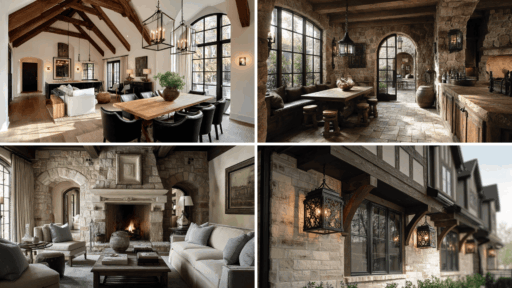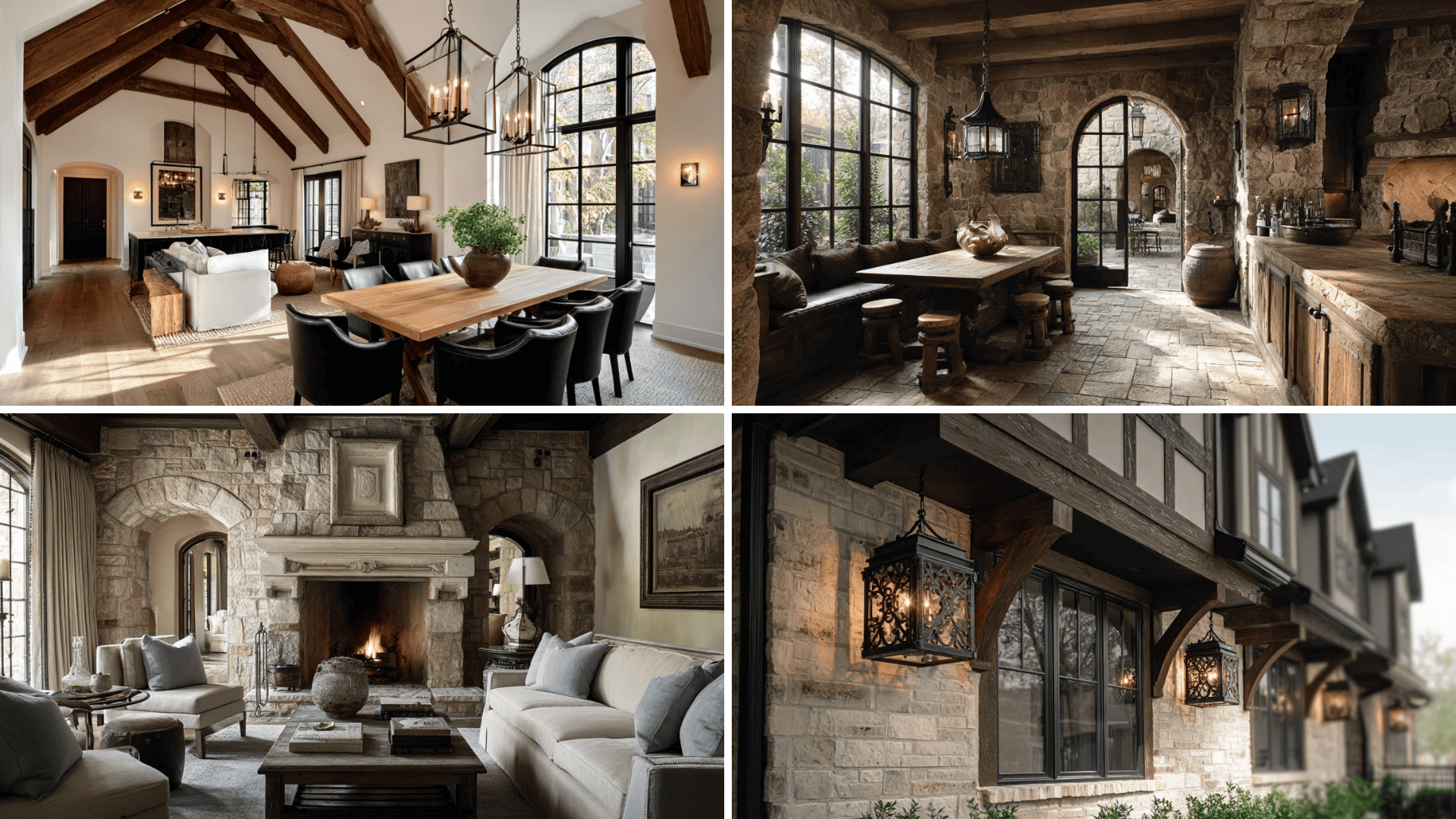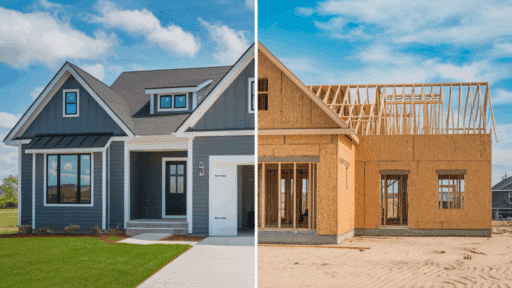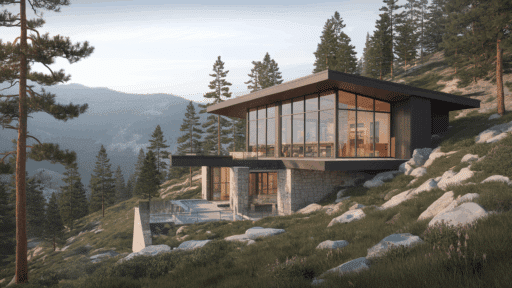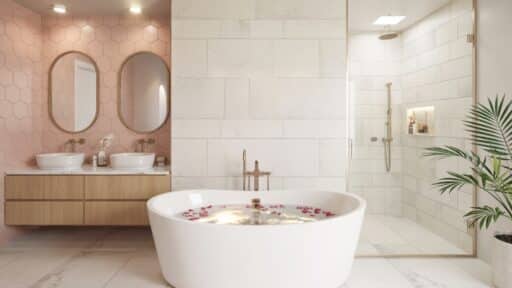What makes English Tudor houses so timeless and charming? These homes combine the cozy look of medieval cottages with details that never go out of style.
With their steep roofs, tall brick chimneys, half-timbered walls, and leaded-glass windows, Tudor-style houses are easy to recognize and loved by many.
Found in historic neighborhoods or recreated in modern builds, their unique character stands out.
In this guide, you will learn where the Tudor style came from, what makes it special inside and out, and see some creative ideas to bring this look into your own home.
If you’re planning a renovation or just love old-world design, this article has something to inspire you.
Origins of English Tudor Architecture
The Tudor period, from 1485 to 1603, brought significant changes to English home design. It moved away from medieval Gothic styles and began to include ideas from the revival.
As nobles and merchants became wealthier, they started building more houses that were both useful and decorative.
Wealthy families built large homes using brick or stone with fancy details like carved wood and tall chimneys. In villages, people built simpler timber-framed cottages.
Even though these homes looked different, they all focused on skilled building work, using features like exposed beams, steep roofs, and textured finishes that are still admired today.
Classic English Tudor House Design Ideas
Tudor-style homes are known for their steep roofs, timber accents, and charming details. Drawing from English tradition, these design ideas blend historic beauty with modern comfort.
If you’re planning a new build or renovating, this list helps you create a warm and classic Tudor-inspired home.
1. Cross-Gabled Rooflines
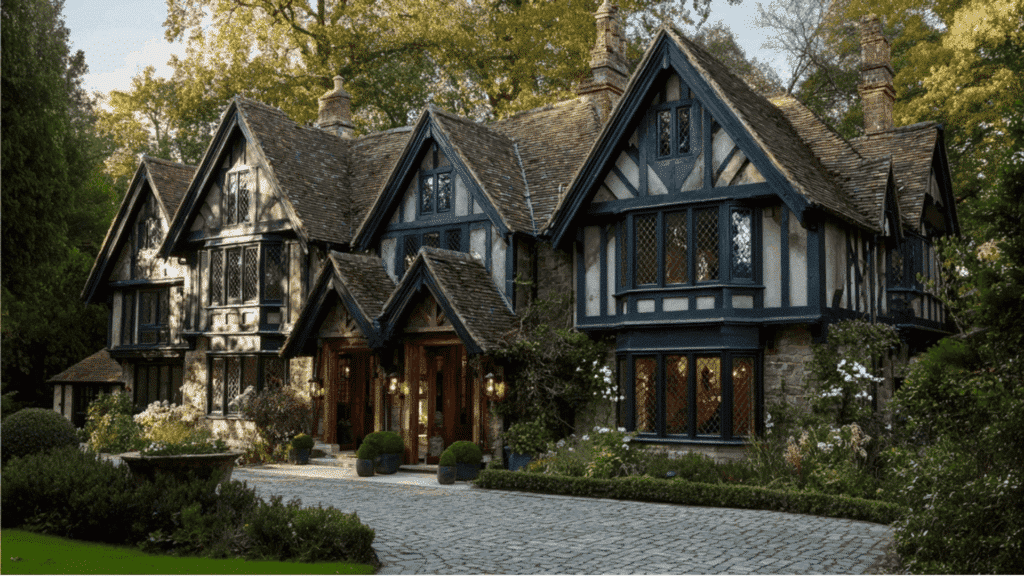
Cross-gabled rooflines are a hallmark of Tudor architecture, adding complexity and depth to the roof. The intersecting peaks create strong visual interest while allowing for unique room layouts inside.
This design also helps with water drainage and snow runoff, making it both beautiful and functional in various climates.
2. Half-Timber Façade Treatments
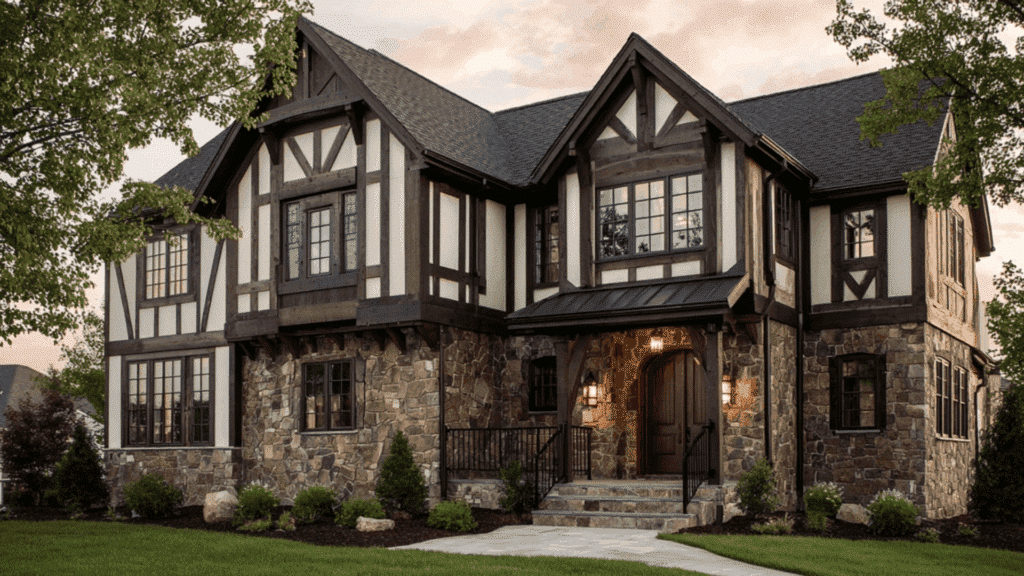
Half-timbered walls showcase visible wood framing with light-colored infill like plaster or stone. This iconic look reflects medieval construction methods and adds rich texture to your home’s exterior.
Modern materials can replicate this aesthetic while improving durability, blending tradition with today’s construction standards and insulation needs.
3. Leaded Casement Windows
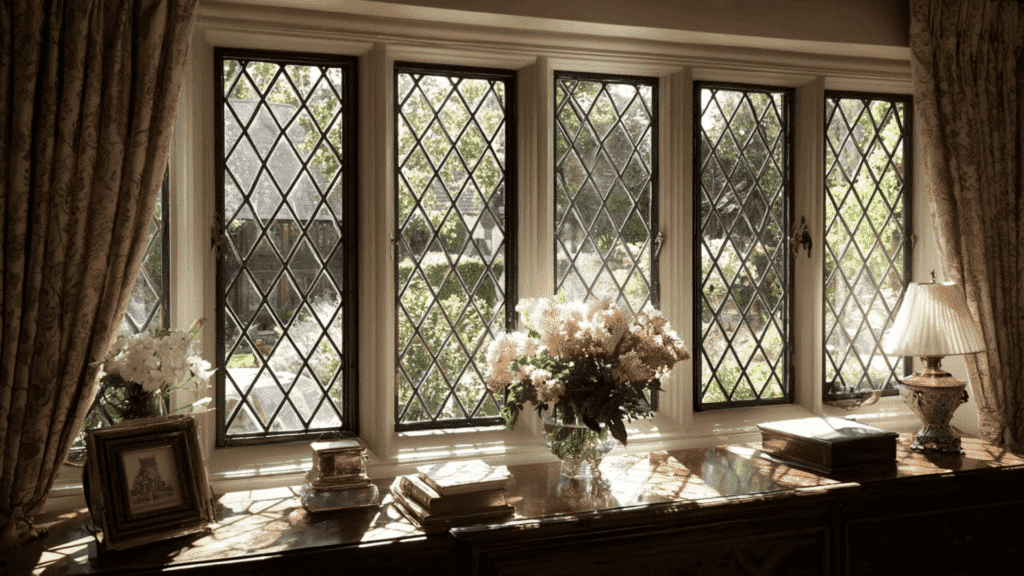
Leaded casement windows with diamond-patterned panes are commonly found in Tudor homes. They open outward, promoting airflow and a cottage-like charm.
These windows frame views beautifully while casting unique shadows indoors, contributing to the cozy, lived-in feel that makes Tudor interiors so distinctive and inviting year-round.
4. Brick Chimneys as Focal Points
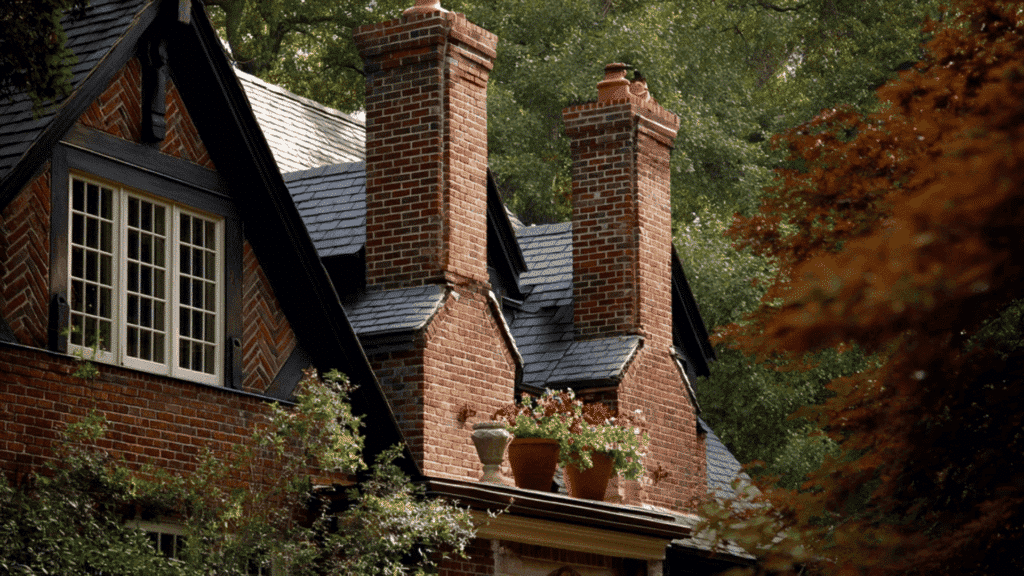
Tudor chimneys are tall and made from brick, often with decorative pots on top. They act as visual anchors on the home’s exterior, giving structure and balance.
Chimneys are frequently detailed with brickwork in herringbone or stacked patterns, showing off craftsmanship and enhancing the home’s historical character.
5. Arched Wooden Entry Doors
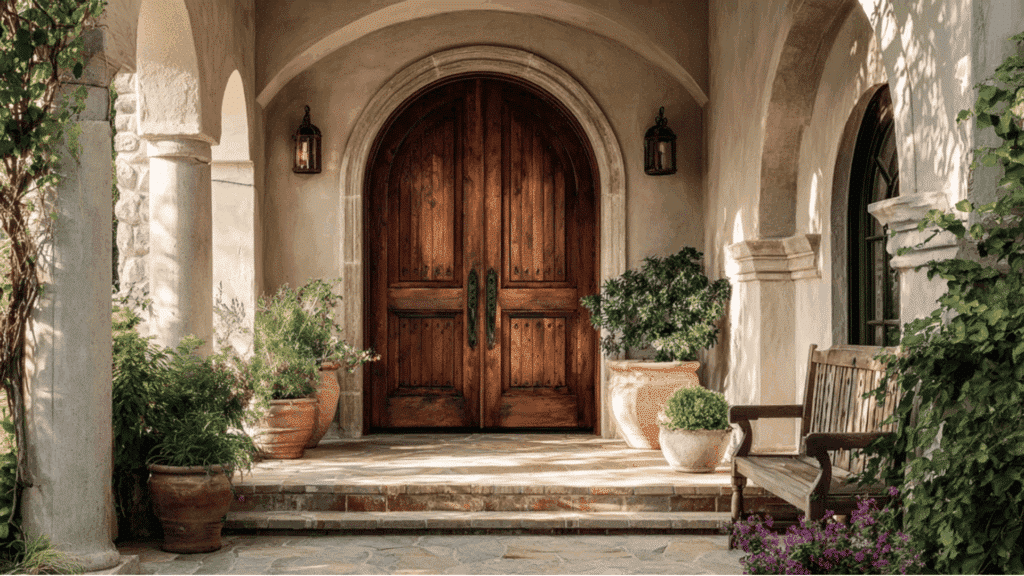
A heavy, arched wooden door is a classic Tudor element. These entryways offer a sense of permanence and welcome while echoing old-world charm.
Often paired with wrought-iron knockers or hinges, the arched design feels warm and intimate, making a lasting impression from the moment guests arrive.
6. Tudor-Inspired Color Palette
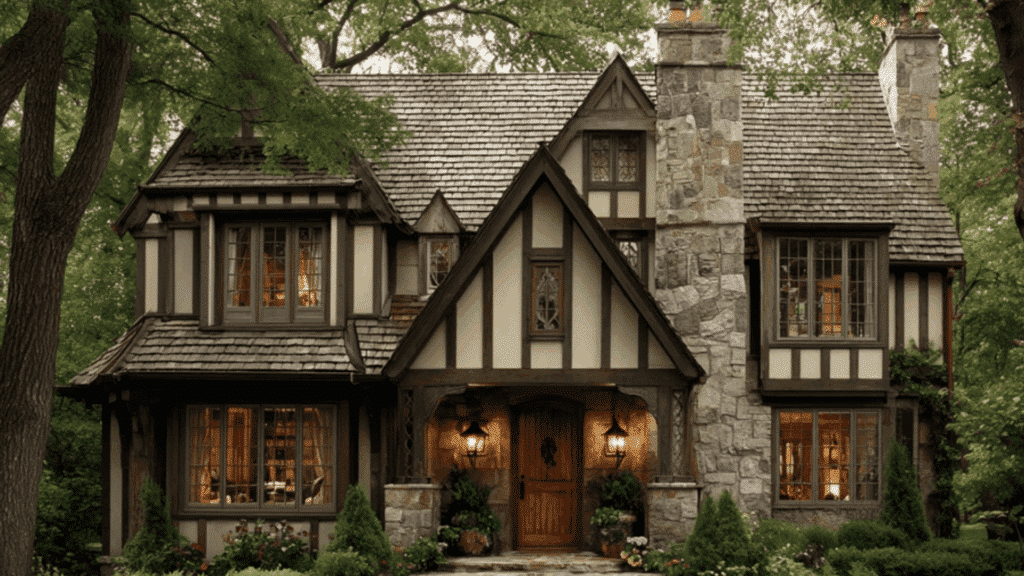
Tudor homes favor natural, earthy tones like muted browns, creams, and forest greens. These colors echo the surrounding landscape and complement the timber exteriors.
Using this palette helps reinforce the grounded, organic quality of the style, allowing both interiors and exteriors to feel harmonious and well-rooted in tradition.
7. Asymmetrical Front Layout
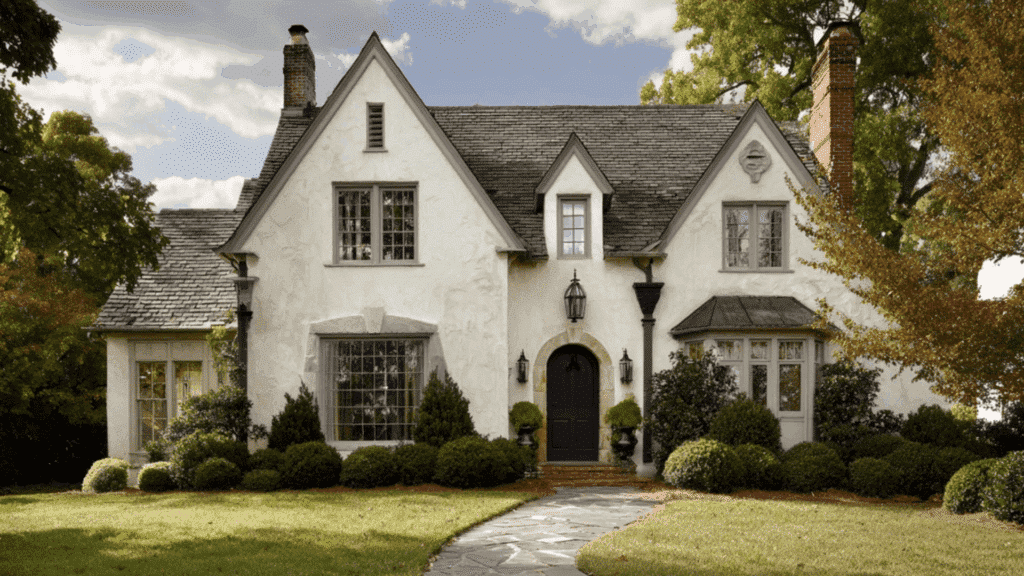
Unlike symmetrical facades, Tudor homes often feature off-center entries, projecting bays, and varied roof heights.
This asymmetry gives the house an organic, handcrafted appearance. The uneven composition allows for creative design opportunities, such as cozy nooks or recessed windows, offering a warm and storied feel from every angle.
8. Interior Exposed Ceiling Beams
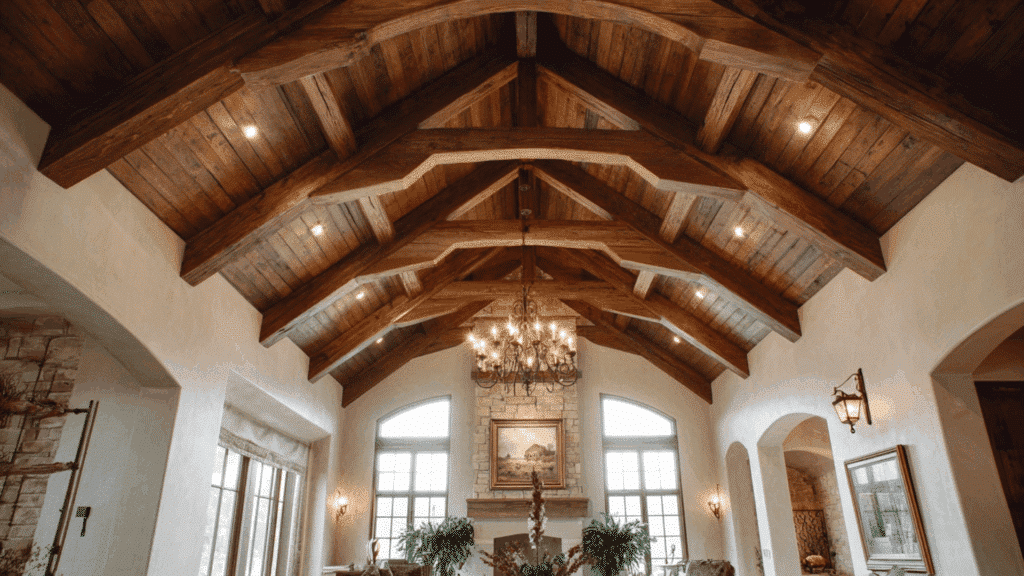
Inside a Tudor-style home, exposed wooden ceiling beams provide visual warmth and historical texture.
These beams can contrast with light plaster ceilings, drawing the eye upward and adding vertical interest, whether structural or decorative. Beams contribute to a cozy, rustic atmosphere that upgrades traditional or transitional interior decor.
9. Grand Indoor Fireplace
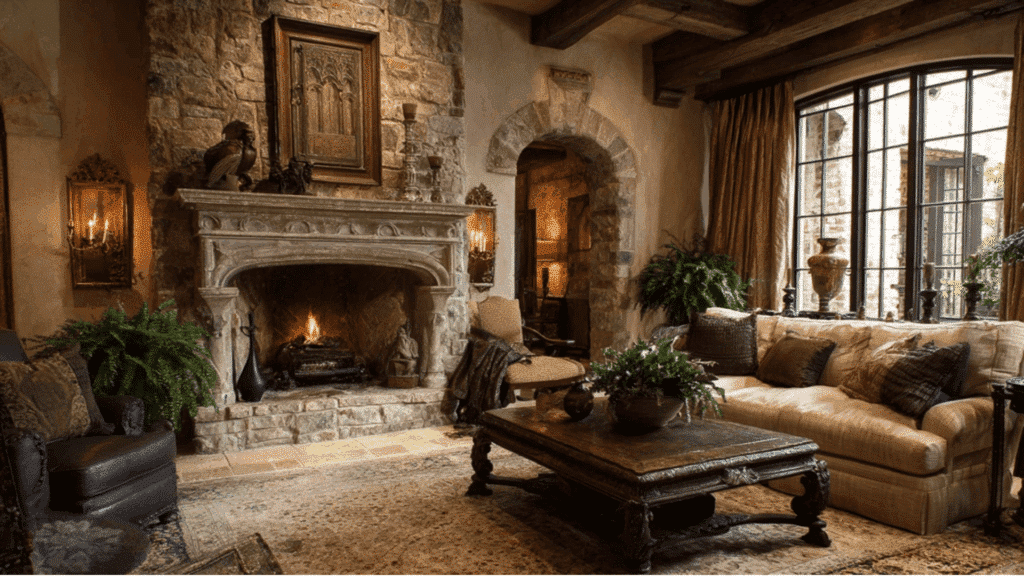
A grand fireplace anchors the living space, often made of stone or brick with a carved wooden mantel.
It serves as a gathering spot and evokes the heart of Tudor domestic life. Fireplaces in this style are large, inviting, and often decorated with simple iron tools or soft textile accents.
10. Wood Paneling for Interior Walls
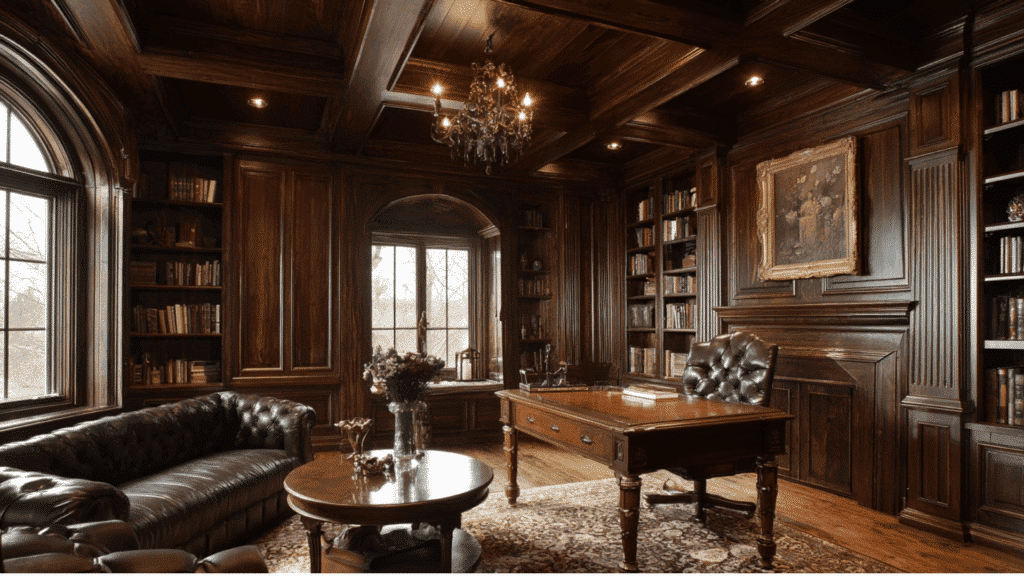
Rich wood paneling, typically in darker finishes, adds depth and warmth to Tudor interiors. Often found in libraries, studies, and dining rooms, paneling gives a refined and grounded look.
The natural grain of the wood brings subtle detail, making the space feel luxurious without being overly ornate or busy.
11. Tudor Charm for Compact Homes
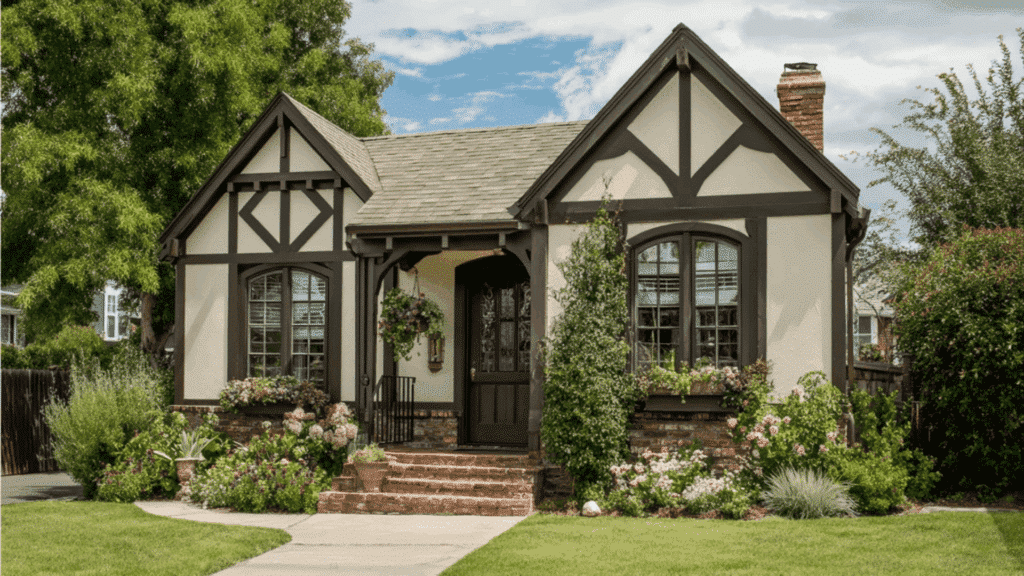
Tudor design can adapt to small houses without losing charm. Using gables, timber accents, and textured façades, even modest homes can evoke the Tudor style.
It’s ideal for urban or narrow lots where full-scale historic replication isn’t possible, but stylistic touches can still make a strong architectural impact.
12. Cottage Garden Landscaping
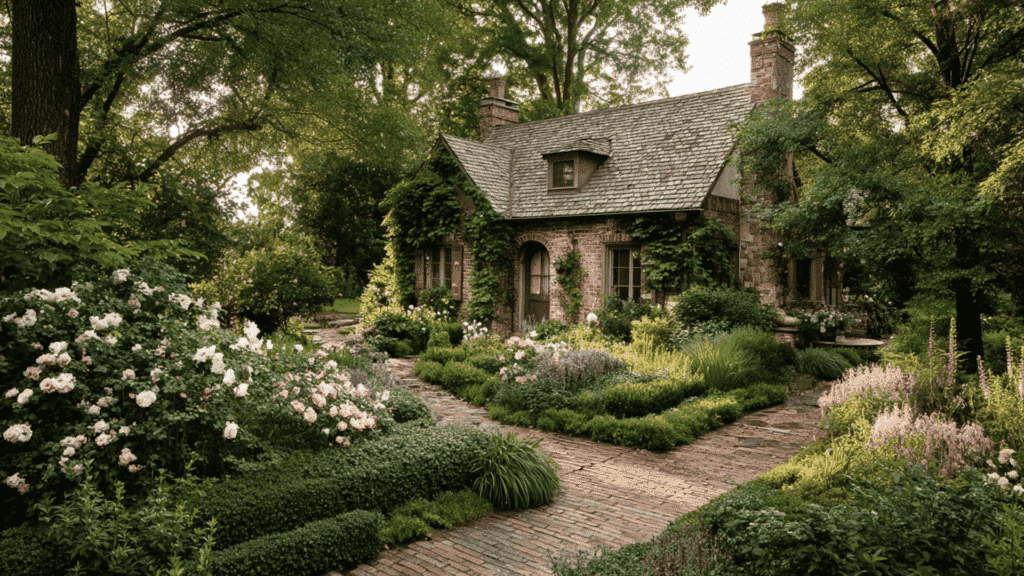
Traditional Tudor landscaping features soft, informal cottage gardens with flowering perennials, boxwood hedges, and climbing vines.
These gardens create a romantic atmosphere and soften the structure’s strong lines. Brick or gravel paths guide visitors, while floral borders bring seasonal color that complements the rustic charm of the architecture itself.
13. Brick or Stone Walkways
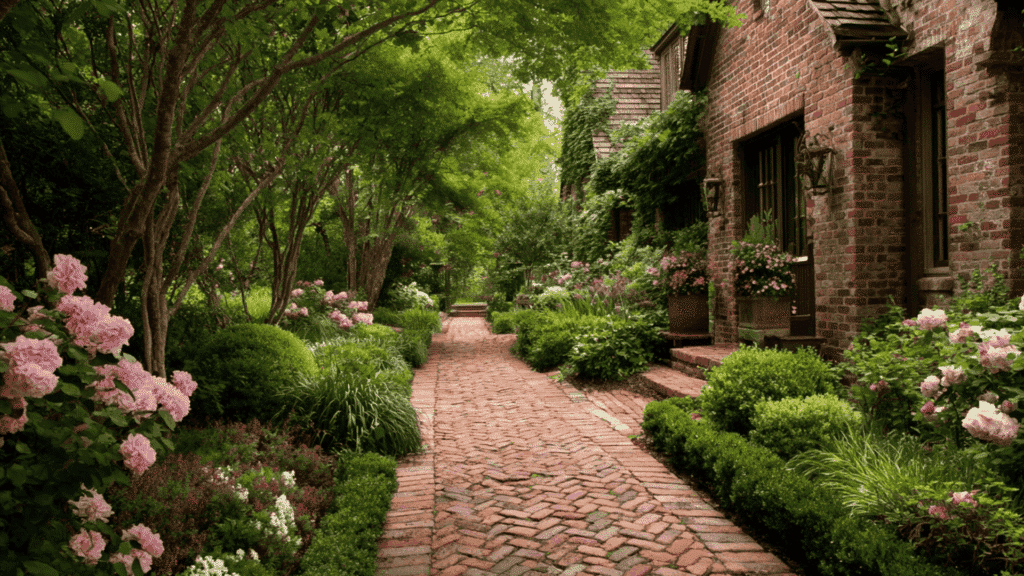
Pathways made of brick or natural stone boost the old-world feel of a Tudor home. Laid in classic patterns like herringbone, they connect the house to the garden with style and substance.
These materials age gracefully and pair well with lush greenery, framing the home with timeless, textural appeal.
14. Wrought-Iron Hardware and Lighting
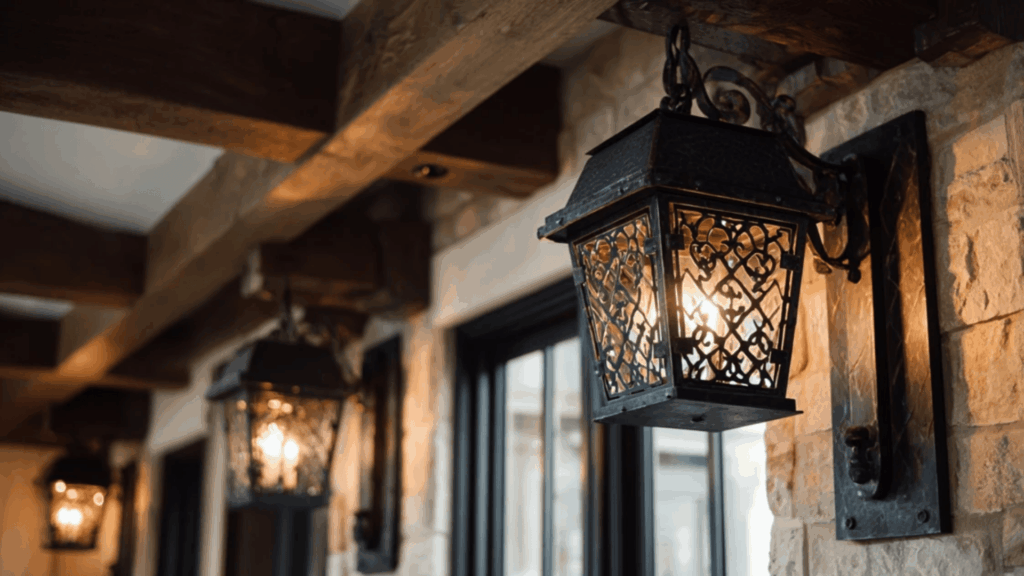
Tudor homes benefit from iron details like lanterns, hinges, and window grilles. These elements are both decorative and durable, reinforcing the structure’s historic theme.
Matte black or aged finishes work best, creating subtle contrast with wood or stone surfaces while contributing a handcrafted, enduring quality to every space.
15. Tudor Exteriors with Modern Interiors
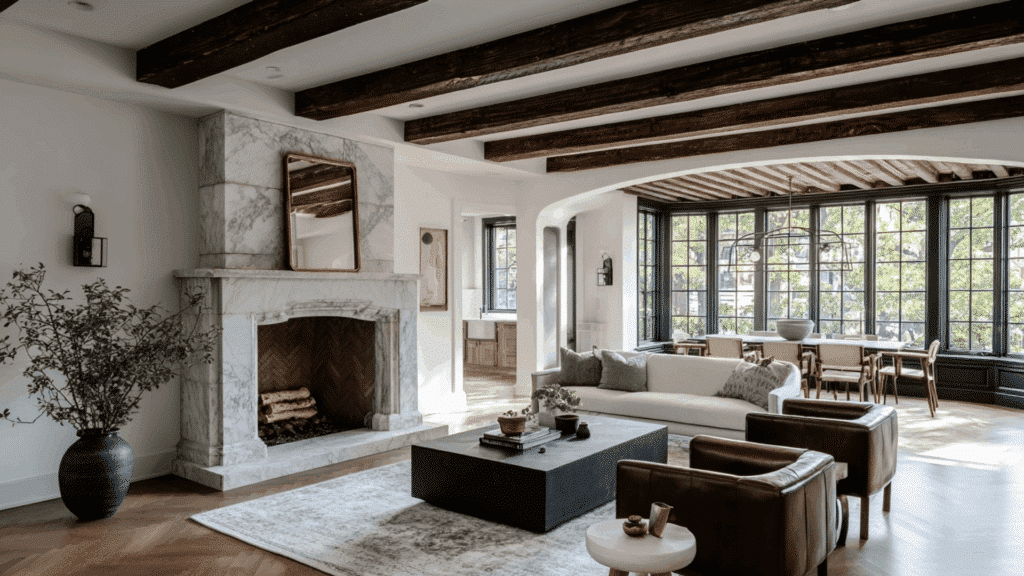
You can pair a traditional Tudor exterior with a modern, light-filled interior. Open floor plans, minimalist furnishings, and contemporary lighting contrast beautifully with the home’s rustic outside.
This mix respects history while offering modern comfort, allowing the best of both eras to coexist in a cohesive, livable design.
Differences Between Tudor and Tudor Revival Homes
When checking English Tudor homes, it’s a must to distinguish between original Tudor architecture and its modern reinterpretation, known as Tudor Revival.
| FEATURE | ORIGINAL TUDOR | TUDOR REVIVAL / MOCK TUDOR |
|---|---|---|
| Timber Framing | Structural | Decorative or faux |
| Roof & Gables | Very steep, asymmetrical | Steep, slightly modernized |
| Windows | Diamond leaded-glass | Multi-pane or vinyl casements |
| Chimneys | Oversized, fully functional | Smaller, often decorative |
| Floor Plan | Divided rooms, organic layout | Blended with open-plan concepts |
Tudor Revival homes adapt historical style for contemporary living, combining nostalgic exterior details with modern materials and functional, spacious interiors.
Final Thoughts on Showcasing Tudor Style
English Tudor homes offer more than visual beauty. They bring a sense of warmth, history, and depth that modern designs often lack. From steep gables to intricate woodwork, every feature tells a story.
This architectural style blends tradition with charm and invites you to build a home with lasting personality.
Start with a window, a beam, or a gable and let the design grow from there. Which Tudor element speaks to your taste and space?
Tell us in the comments. For more ideas, check our other guides on Tudor gardens, color palettes, and affordable interior design tips.

